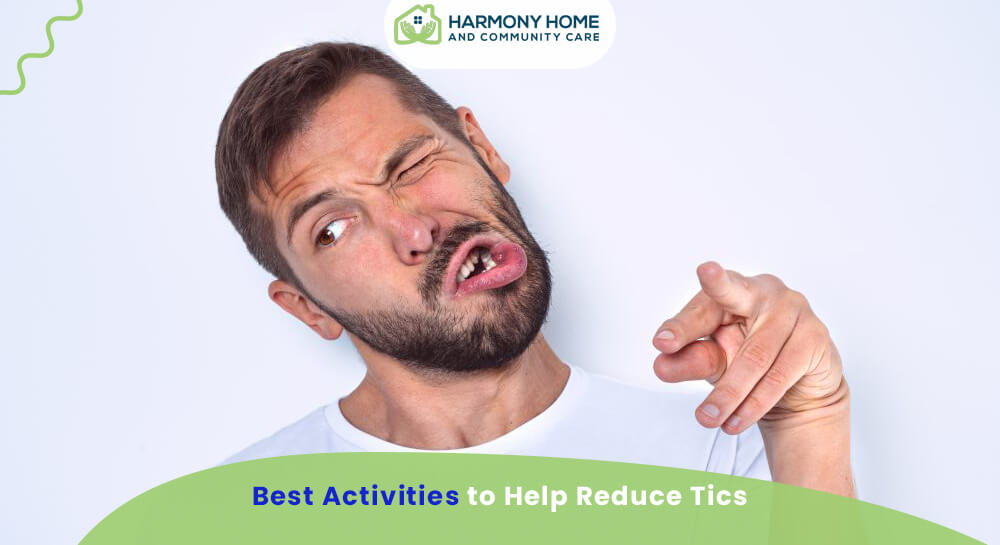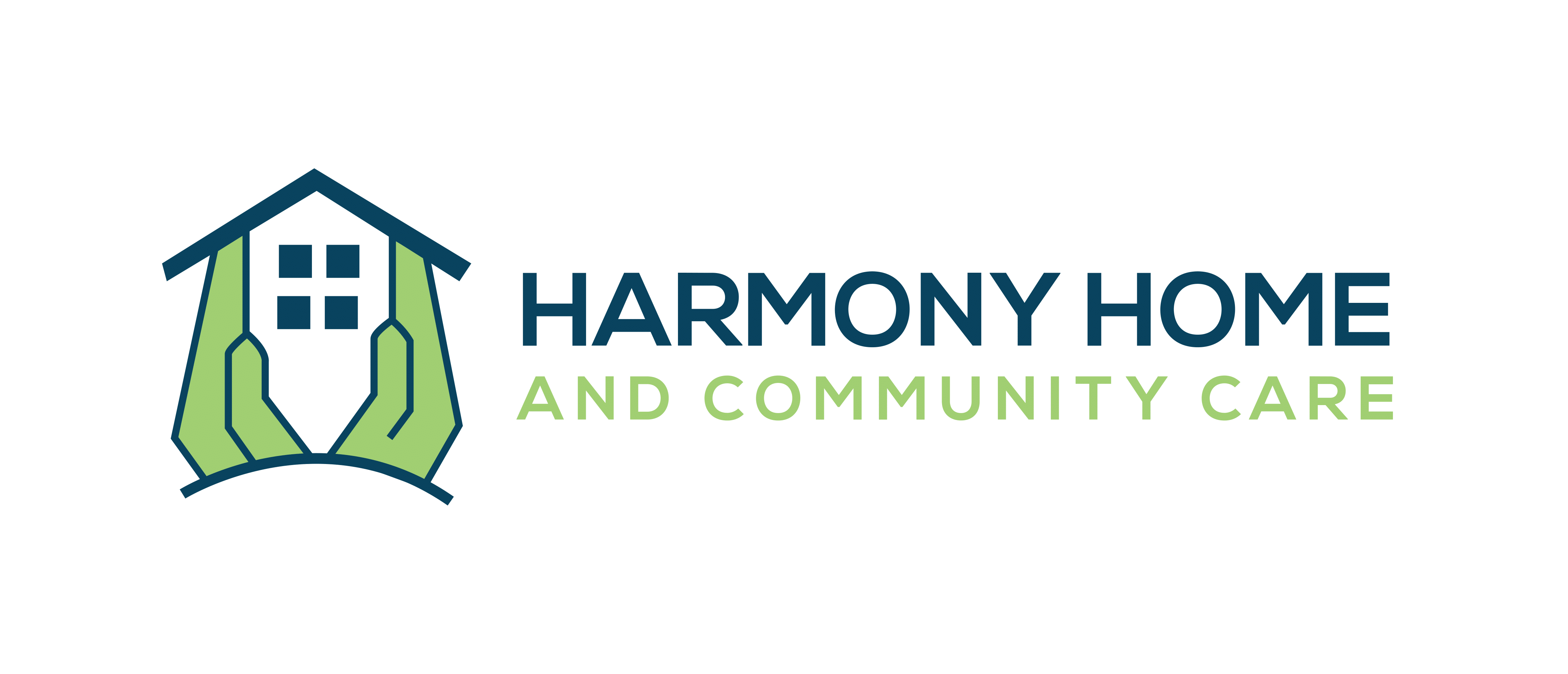Harmony Homes
February 2, 2024
Best Activities to Help Reduce Tics

Best Activities to Help Reduce Tics
Tourette Syndrome (TS)
Tourette Syndrome (TS) is a neurological condition characterized by the presence of involuntary movements and vocalizations, also known as tics. It can significantly impact a person’s daily life, making it difficult to concentrate, interact with others, and carry out activities. The National Disability Insurance Scheme (NDIS) in Australia aims to support individuals living with disabilities, including those with TS.
Tourette Syndrome (TS) is a neurological condition characterized by the presence of involuntary movements and vocalizations, also known as tics. It can significantly impact a person’s daily life, making it difficult to concentrate, interact with others, and carry out activities. The National Disability Insurance Scheme (NDIS) in Australia aims to support individuals living with disabilities, including those with TS.
This article is present by Harmony home and community care, Melbourne, Australia.
Types of Tics
Motor Tics
Motor tics involve sudden and involuntary movements of different muscle groups. These movements can range from simple actions like eye blinking, facial grimacing, head jerking, shoulder shrugging, or limb movements.
Vocal Tics
Vocal tics consist of involuntary sounds or vocalizations. They can manifest as simple sounds such as throat clearing or sniffing, or more complex vocal expressions like words, phrases, or even swear words (known as coprolalia, though it is rare).
Causes of Tics
The exact cause of tics is not fully understood, but studies suggest that various factors contribute to their development. Here are some possible causes:
1. Neurological Factors
Abnormalities in certain brain regions, including the basal ganglia, frontal cortex, and pathways involving neurotransmitters like dopamine, have been linked to the occurrence of tics. These abnormalities may affect the regulation of movements and contribute to the manifestation of tics.

Recent Posts
Categories
2. Genetic Factors
Genetics play a role in the development of tics. Research indicates that there is an increased risk of tics and tic disorders in individuals with a family history of tics or related conditions. Certain genes have been identified that may predispose individuals to tics, though the specific genetic mechanisms are still being studied.3. Environmental Factors
Various environmental factors can influence the presence and severity of tics. Stress and anxiety are known to exacerbate tic symptoms, leading to an increase in tic frequency and intensity. Additionally, exposure to certain toxins, infections, or prenatal complications may also contribute to the development of tics.
4. Developmental Factors
Tics often emerge during childhood, particularly between the ages of 5 and 9. In many cases, they follow a waxing and waning pattern, with fluctuations in the
frequency and intensity of tics over time. As individuals grow older, tics may decrease in severity or even resolve completely in some cases.
While there is no cure for TS, there are various strategies and activities that can help reduce tics and improve quality of life. These activities can be incorporated into a person’s daily routine and can be particularly beneficial when implemented consistently.
Strategies to Reduce Tics
1. Relaxation Techniques
Implementing relaxation techniques can help manage stress and anxiety, which are known triggers for tics. By promoting a sense of calm and reducing muscle tension, these techniques can help reduce tic frequency and intensity. You may find the following relaxation techniques helpful to incorporate into your routine:
Deep Breathing Exercises
Deep breathing involves taking slow, deep breaths and exhaling gradually. This technique helps activate the body’s relaxation response and can be practiced anytime, anywhere. By focusing on your breath, you divert attention away from tics and promote relaxation.
Progressive Muscle Relaxation
Progressive Muscle Relaxation (PMR) entails the deliberate contraction and subsequent relaxation of various muscle groups throughout the body. Starting from your toes and moving up to your head, tense each muscle group for a few seconds and then release. PMR helps reduce muscle tension and overall bodily stress.
Meditation and Mindfulness
Practicing meditation and mindfulness techniques can aid in calming the mind and reducing anxiety. By focusing on the present moment and observing thoughts without judgment, individuals can create a mental space that is less reactive to tics.
2. Physical Activities
Engaging in physical activities can serve as a distraction from tics and help release excess energy. Regular exercise is beneficial for overall well-being and may contribute to a decrease in tic frequency. Consider incorporating the following physical activities into your routine:
Aerobic Exercises
Aerobic exercises, such as jogging, swimming, biking, or dancing, get your heart rate up and release endorphins, which can boost your mood and reduce stress. Strive to engage in moderate-intensity aerobic exercises for a minimum of 30 minutes on most days of the week.
Stretching and Yoga
Stretching exercises and yoga poses help improve flexibility, reduce muscle tension, and promote relaxation. Additionally, yoga incorporates breathing techniques and mindfulness, providing a holistic approach to managing tics.
3. Habit Reversal Training
Habit Reversal Training (HRT) is a behavioral therapy technique that aims to replace tics with more manageable movements or behaviors. HRT involves identifying the premonitory sensation or urge that precedes the tic and teaching the individual to perform a different, incompatible action instead. Employing HRT can significantly decrease tic frequency. Here’s how it works:
Awareness Training
The first step is to become aware of the premonitory urge or sensation that signals an impending tic. By recognizing these sensations, individuals gain the ability to interrupt the tic response.
Competing Response
Identify a competing response, such as clenching the fist tightly or stretching the muscles, that is physically incompatible with the tic. When the urge to tic arises, perform the competing response instead.
Social Support
HRT is particularly effective when supported by a therapist or a knowledgeable individual who can provide guidance, support, and feedback throughout the process.
4. Cognitive Behavioral Therapy (CBT)
Identifying Triggers
Through therapy, individuals learn to recognize triggers that worsen tic symptoms. Identifying and understanding these triggers can help develop effective coping mechanisms.
Thought Restructuring
CBT aims to reframe negative thoughts and beliefs associated with tics. By challenging irrational beliefs and replacing them with more rational and positive ones, individuals can reduce anxiety and stress related to tics.
Stress Management Techniques
CBT can equip individuals with stress management techniques such as relaxation exercises, problem-solving skills, and time management strategies. These techniques help mitigate stress, which can exacerbate tic symptoms.
5. Medication
In some cases, healthcare professionals may prescribe medication to manage tics, especially if they are causing significant impairment in daily life. Medications that can be considered include:
Dopamine Blockers
Antipsychotic medications such as haloperidol and risperidone may be prescribed to help reduce tic severity. The mechanism of action of these medications involves the blockade of dopamine receptors within the brain.
Alpha-2 Adrenergic Agonists
Medications such as clonidine and guanfacine, originally developed to treat high blood pressure, can also help reduce tics. They act on the noradrenergic system in the brain, which can modulate tic symptoms.
6. Dietary Modifications
Although research on dietary modifications for tics is limited, some individuals report a reduction in tic severity after making certain changes to their diet. While individual responses may vary, consider exploring the following options:
Identifying Food Triggers
Keep a detailed record of your diet and tic symptoms to identify any potential correlations between certain foods and tic exacerbation. Common triggers include caffeine, artificial sweeteners, and food additives.
Balanced Diet
Ensure you maintain a nutritious, well-balanced diet with plenty of fruits, vegetables, lean proteins, and whole grains. A healthy diet supports overall well-being and may positively impact tic symptoms.
7. Support Groups and Education
Joining support groups or attending educational programs can provide valuable information and emotional support for individuals with tics and their families. Interacting with others facing similar challenges can foster a sense of belonging, reduce isolation, and provide practical strategies learned from others’ experiences.
8. Stress Management Techniques
Stress is known to exacerbate tic symptoms, so implementing stress management techniques can be immensely helpful. Consider the following stress management strategies:
Time Management
Effective time management techniques, such as prioritizing tasks and creating schedules, can reduce stress levels.
Hobbies and Relaxation
Engaging in enjoyable activities and hobbies can serve as an effective stress reliever. Find activities that bring you joy and help you relax, whether it’s reading, listening to music, or pursuing creative outlets.
Social Support
Maintaining a strong support system of family and friends who understand and offer support can greatly contribute to stress reduction.
By implementing these approaches, individuals with tics can significantly reduce tic symptoms and improve their overall well-being. Remember, it’s crucial to work with healthcare professionals to create a personalized approach that best suits your needs.
Read More NDIS Topics on the links below:
What is STA, MTA, and SIL Eligibility in Australia? | NDIS Innovative Community Participation | NDIS Registered Providers | NDIS Household Tasks | Harmony Home and community Care – HHACC | Home and Community Care | NDIS Services | NDIS Services Provider | mta ndis | ndis assistive technology | harmony home care


